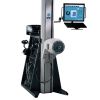
CPT 97530: How To Document Therapeutic Activities for Reimbursement
Treatment GuidelinesOTs, PTs, and other rehabilitation professionals use CPT 97530 for "dynamic activities to improve functional performance." With this definition, you may think any treatment qualifies as Therapeutic Activities. But payers are looking for something more specific in your documentation for reimbursement.
CPT 97530 is one of the most widely used procedure codes in occupational therapy and physical therapy. In a previous post, we discussed CPT code 97110 (Therapeutic Exercise) at length. Within that article, we briefly touched on the differences between Therapeutic Exercise and Therapeutic Activities. This post will serve to provide further information on Therapeutic Activities for your documentation.
Namely, we’ll provide you with the following pertaining to this CPT code:
- The definition of Therapeutic Activities
- When to use CPT 97530 as opposed to other similar codes
- Other important considerations surrounding code 97530
If you’re new to learning about CPT codes for occupational therapy or physical therapy, start with this article: The 3 Most Common CPTs in Rehab and How To Document Them for Reimbursement.
Therapeutic Activities in Brief
The APTA defines procedure code 97530 as “the use of dynamic activities to improve functional performance.” Within this definition, “functional” and “dynamic activities” do a lot of heavy lifting. If you think about it long enough, you could fit essentially any treatment into this category.
However, payers are generally looking for something more specific when they reimburse Therapeutic Activities. CPT 97530 generally refers to movement patterns that are used to accomplish specific tasks throughout the day. Think about functional activities like getting out of bed, opening a jar, using a steering wheel, and more. Simulating these and other functional tasks in the clinic would qualify as Therapeutic Activities.
Difference Between Therapeutic Activities and Therapeutic Exercise
It’s easy to get Therapeutic Activities and Therapeutic Exercise mixed up. The interventions that fall under these two CPT codes are quite similar. Here’s an example that shows the difference:
For instance, ascending and descending stairs usually fall under Therapeutic Activities. These tasks require coordination, strength, and timing from many different areas of the body. The key element that pushes stair negotiation toward Ther Act instead of Ther Ex is the functionality of the movement. Plus, a person who is climbing the stairs integrates many different skills all at once.
On the other hand, if you are working with your patient on the individual component portions of stair negotiation (such as controlled knee flexion and extension), it might be more appropriate to bill for Ther Ex.
While these terms certainly have a lot of gray within them, it’s crucial to remember that Therapeutic Activities are related to function. If the exercise or activity is not directly functional, you may be better off using another CPT code in order to avoid fraudulent claims.
Performing and Documenting CPT 97530
Simulating functional tasks is the best way to prepare your clients to get back to those activities. Functional rehabilitation equipment like PrimusRS helps you evaluate and perform virtually any activity in your clinic. Practice ADLs, sports, job tasks, and isolated movements with the many tools, attachments, resistance modes, and exercise modalities. With PrimusRS, you can perform Therapeutic Activities that exactly match the real-life activity.
As for documenting CPT 97530, your notes must include certain criteria in order to qualify for reimbursement. One of the most important is showing progress over time. Without documenting patient progress, your reimbursement claims may get denied. Using quantified measurements of strength, ROM, and functional performance ensures that your documentation is indisputable. With the PrimusRS’ progress reports, you get detailed charts and graphs showing your patients’ progress in each activity they perform. These progress reports show concrete evidence that payers and referrers want to see. Plus, the charts and graphs keep patients motivated to come back and see their progress continue.
In addition to progress over time, we’ll discuss the other requirements for documentation of CPT 97530: the eight-minute rule, modifier 59, qualifying specialties, reasons for denial, and future legislation that affects reimbursement.
The Eight-minute Rule Applies to Therapeutic Activities
Like many other codes, CPT 97530 is subject to the eight-minute rule. Briefly, the eight-minute rule states that you must perform the activity for a minimum of eight, and a maximum of 22 minutes in order to bill for one unit of that code. If the treatment extends beyond 22 minutes, the therapist may bill for multiple units. If the treatment lasts less than eight minutes, the therapist may be able to combine the time spent on this activity with another treatment. Combining treatment times from separate timed codes is a process known as “mixed remainders.”
Unfortunately, not all payers will accept mixed remainders, and it is important to review individual insurance company policies for clarity on these billing nuances.
Modifier 59 For Therapeutic Activities
One applicable modifier for CPT code 97530 is modifier 59. Modifier 59 is fairly common in the rehab setting. Essentially, this modifier indicates that multiple distinct procedures were performed during separate 15-minute increments.
For example, if an Occupational Therapist had a patient practice transferring from a chair to a bed for 15 minutes, and then performed 15 minutes of manual therapy, they may need to use modifier 59.
Specialties Who Commonly Bill for CPT 97530
Therapeutic activities are a mainstay for Occupational Therapists. OTs use CPT 97530 nearly every day. Physical Therapists, on the other hand, will more often utilize Therapeutic Exercise in order to work on specific parameters of exercise.
For instance, the OT might be more inclined to work on the pattern and component parts of a car transfer while the PT might work to strengthen the muscles associated with said transfer. However, these are by no means hard and fast rules. PTs can and do have their patients perform both Therapeutic Exercise and Therapeutic Activities, and OTs do the same.
In addition to PTs and OTs, you may not have known that Certified Athletic Trainers (ATCs) can also bill for reimbursement of certain CPT codes. Learn more about how Athletic Trainers can use CPT codes here: Reimbursement for Athletic Trainers – What You Need To Know.
Reasons for CPT 97530 Denial
Denial by a payer is almost always due to a lack of demonstration of medical necessity, in one way or another. You are unlikely to face many denials if you can show that what you have done for your patient meets the following criteria:
- Medically necessary – Does the plan of care clearly document why the treatments are needed? This should provide a clear, logical rationale for your treatment approach where a payer can see what the patient’s deficits are and how the proposed treatments will help them.
- Helps them progress over time – Progressive overload, and progress in general, is critical for helping patients to improve. If the patient is doing the same things over and over each session, with no progress or increased difficulty, the payer may not reimburse you.
- Proper supervision – Clinical supervision is an important part of reimbursement. There are clear guidelines for who can perform which treatments under various levels of supervision. For Therapeutic Activities, patients must be supervised in a direct, one-on-one setting.
As is always the case, the more information you can provide about the treatment and the necessity of it for the patient’s health, the less likely you are to face issues related to reimbursement. For more tips on avoiding claims denials, check out this article: Skilled Service Documentation Tips for Reimbursement.
Therapeutic Activities in 2024
As we move closer to 2024, rehab professionals can expect to see some reimbursement changes. Medicare announced a cut of 3.4% which could drastically affect many different rehab professionals.
However, while this news is certainly not encouraging, the APTA was not altogether unhappy with CMS’s decisions for the coming year. In fact, certain services provided by rehab therapists, such as Therapeutic Exercise, Gait Training, and Therapeutic Activities may actually increase in value.
The APTA has long argued that these services have been undervalued and, to the surprise of many, CMS seems to have tentatively agreed. So, we will all keep our eyes open for these changes in 2024.
Conclusion
If you take nothing else from this post, remember that CPT 97530 Therapeutic Activity can only be billed for functional activities. Again, this code is often confused with CPT 97110 Therapeutic Exercise, which is used for more specific exercises geared toward improving an area of fitness or wellness. But as long as your documentation is thorough and sound, payers should reimburse this code without much ado.
Bennett Richardson, PT, DPT, CSCS is a Physical Therapist and writer. He is the owner of Richardson PT LLC, a mobile, cash-based physical therapy service out of Pittsburgh, PA. Ben is passionate about many health-related topics including weight loss and athletic performance. To get in touch with Ben, visit www.richardsonpt.com






